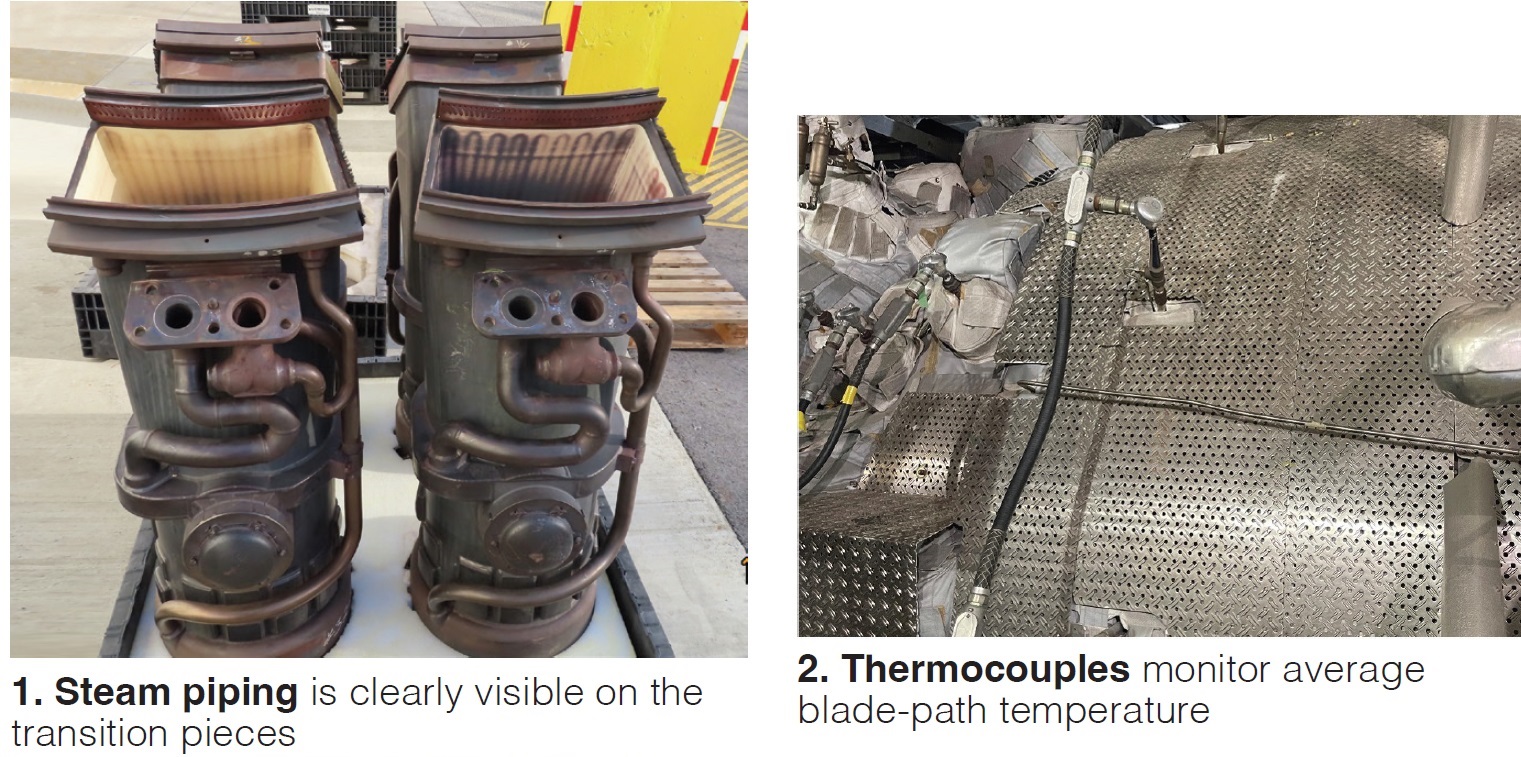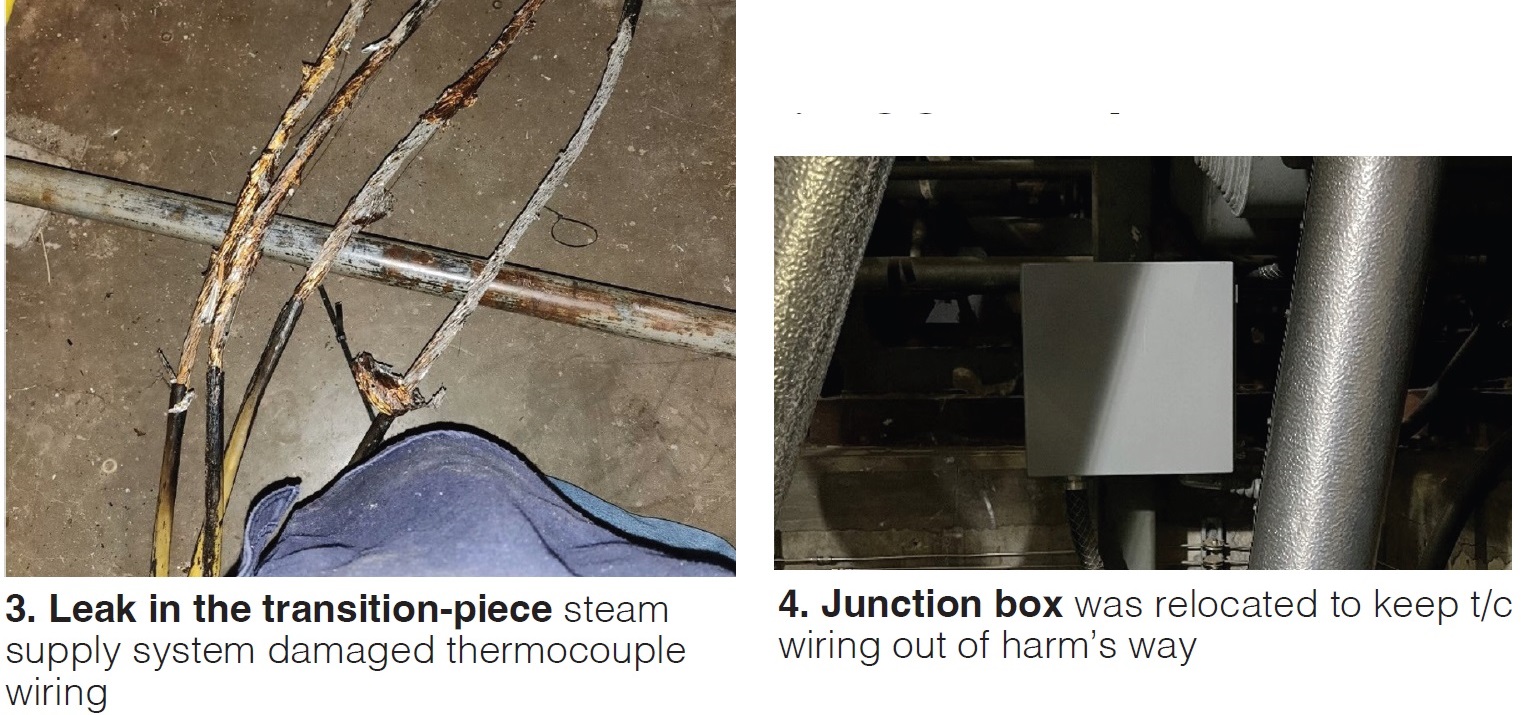
2024 501G BEST PRACTICES AWARDS
Millennium Generating Plant
Owned by Beal Bank
Operated by NAES Corp
360 MW, gas-fired 1 × 1 combined cycle equipped with the first Siemens 501G engine to begin commercial operation, located in Charlton, Mass
Plant manager: Max Greig
Background. The Millennium W501G is equipped with steam-cooled transition pieces which allow the gas turbine to run at higher combustion temperatures than possible without such cooling (Fig 1).
The spent coolant is returned to the reheat steam system, thereby improving plant efficiency. Note that the steam piping, located inside the GT enclosure, is flanged for ease of disassembly during outages.

Sixteen duplex thermocouples monitor average blade-path temperature (Fig 2). They also track the temperature differences among combustors, protecting the GT in the event of a high a temperature spread. Wiring for the t/cs runs in conduit and is terminated in junction boxes located next to the pipe flanges.
Challenge. Millennium has experienced GT blade-path wiring issues arising from transition-piece (TP) steam-pipe flange leaks throughout its 23 years of commercial operation. While some instances of damage were minor, others led to forced outages. Replacement of all blade-path wiring became necessary, incurring both downtime and $80,000 in material and labor costs (Fig 3).
The latest incident involving t/c wiring was an August 2024 trip attributed to a blade-path temperature variance. Source of the problem: A leaking flange on the TP steam supply line. It put 530F IP steam in contact with the conduit that the blade-path wiring ran through. Steam got inside the junction box where the wiring was terminated, causing condensation to form on the terminal strips. A temporary fix involved replacing the flange gasket and running temporary wires outside the box away from the flange. That done, the GT could be started.

Solution. Plant staff collaborated to develop a permanent, long-term solution. First step was to relocate the junction box under the machine, keeping the conduit and wiring clear of the TP steam flanges (Fig 4).
Second: Experience led the team to focus on the leaking flange (Fig 5). Staff believed the most likely cause of the leak was a loss of load on the flange bolts. The team had prior success using Belleville-spring washers to resolve similar flange issues. The decision was made to install them on the TP steam flange to maintain the desired bolt load over a long period.

Recall that there are several reasons a bolt might lose the load placed on it: They included thermal expansion, high-pressure cycling, gasket creep, and vibration, among others.
Results. Modifications were completed during the 2023 fall outage and there has not been a recurrence of steam leaks since. The unit has cycled several times and the flanges have held without issue.
Project participants:
Max Greig, plant manager
Dennis Hamel, maintenance manager
Anthony Lucia, operations manager/chief engineer
William Wallin





